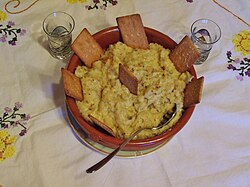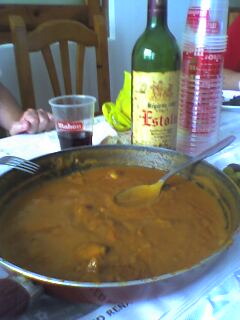 Gachas de matalauva. Sweet gachas from Andalucía flavored with anise | |
| Course | Staple dish |
|---|---|
| Place of origin | Spain |
| Region or state | Andalusia, Castile-La Mancha, Region of Murcia, parts of Extremadura and Valencia |
| Serving temperature | Warm |
| Main ingredients | Wheat flour, grass pea flour or corn flour |
| Variations | Sweet gachas (gachas dulces) |
Gachas is an ancestral basic dish of central and southern Spain. It is a gruel whose main ingredients are flour, water, olive oil, garlic, paprika and salt.



